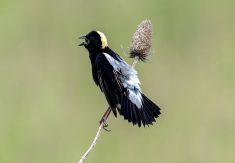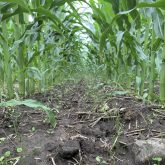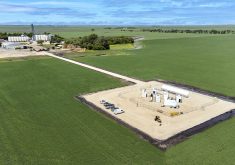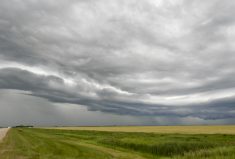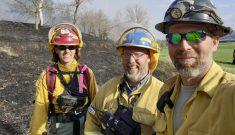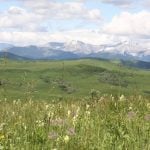We cut down a lot of trees and drained a lot of wetlands to create Ontario’s agricultural landscape. With so few natural spaces left, and as economic pressures continue to push crop producers toward maximizing every available acre, I’m increasingly convinced legislation to protect nature from ourselves is a necessity.
Aside from the environment, there are practical political and economic reasons to support hypothetical restrictions on the removal of woodlots, fencerows, tallgrass prairie and the like. If we are proactive, there is opportunity to lobby for frameworks that support our bottom lines as well as nature.
Not doing so means that one day, we face a higher chance of regulations that burden more than they reward.
Read Also

Defence investments could benefit agriculture
A bump in Canada’s NATO spending commitments could lead to infrastructure investments that would benefit rural areas
Little restriction on harmful activity
A core issue is a discrepancy between how farmers and commercial developers can transform land.
Let’s say a commercial developer wants to clear a 15-acre woodlot for houses. Before clearing and construction can begin, that developer is required to carry out an environmental investigation to determine if removing the woodlot will negatively affect particular animal or plant species, increase flooding risk, and so on.
The requirements that must be addressed in the investigation will change based on the landscape’s characteristics.
Whether such requirements are actually effective at preventing ecological damage is another question, but commercial developers have to at least try to prove their intentions will not cause excessive environmental harm.
Farm businesses are also obliged to not cause harm to Ontario’s natural spaces and species. However, they are under little or no obligation to provide environmental assessments before starting the chainsaw. Generally, they can transform any landscape to suit production needs.
Proving their actions did, in fact, hurt species at risk would have to be done after the fact when the evidence has been all but destroyed.
Flexibility to manage our land as we see fit is the charitable, positive way one might view this state of affairs. But time and again, the agriculture community seems incapable of re-prioritizing land use.
When the price of corn, soybeans or vegetables is good, natural spaces are cleared in an effort to maximize profits. When prices are poor, natural spaces are cleared to maximize profits. Continued farmland consolidation only exacerbates the process; species at risk, erosion, and other environmental fallout be damned.
Getting ahead
From a regulatory perspective, we in Canadian agriculture often look to Europe to see where we might be in five, 10, or 20 years’ time. Animal welfare requirements for housing and transportation offer a prime example.
I’d argue that environmental protection is another, and one of particular note in recent months as farmers across multiple European Union countries take to the streets in protest of what they perceive to be ever-tighter environmental regulations.
Ask yourself, how happy would you be if trimming a fencerow was no longer permitted because it was found to house a rare lichen species? This is reality on some farms in the United Kingdom, where the government maintains distinct management requirements — if not outright moratoria — for “sites of special scientific interest.”
We ignore such examples at our peril.
Conversely, proactively identifying the problem could bring opportunities to identify solutions. That is, how landowners could be incentivized to, in the words of our European and British colleagues, “farm for nature.”
In Ireland, for example, the ACRES program offers farmers payments to increase the number and length of hedgerows, plant trees, build riparian areas, conserve archeological monuments, and a range of other ecologically minded actions. Similar frameworks are being rolled out in England.
While they are likely far from perfect, both cases could act as a model for made-in-Ontario solutions and support existing but comparatively limited initiatives like the new Resilient Agricultural Landscape Program.
I often hear the argument that Canadian or Ontario taxpayers would never be willing to fund programs like ACRES. I disagree.
In fact, with a little momentum and creativity in design, I’m optimistic that significant investments in environmental incentives for the agricultural landscape would be much more tangible for the taxpayer, and thus easier to stomach.
After all, our national and provincial governments are already spending enormous amounts of cash on perceived environmental initiatives. The huge subsidies directed at the St. Thomas electric vehicle battery plant comes to mind.
To my mind, this shows we as farmers and landowners need to do a much better job of highlighting the ecological problems we helped create and what we can do to fix them.
Like it or not, those of us who have the opportunity — dare I say, the privilege — to work and build on the land must recognize our communities have a significant stake in what we do. That means we have a responsibility to do better.
Failing to protect biodiversity, prevent deterioration in water quality, and such like, will come back to bite us politically.
Why not get ahead? Why not identify more practical ways of farming for nature, and diversify income streams in the process?






